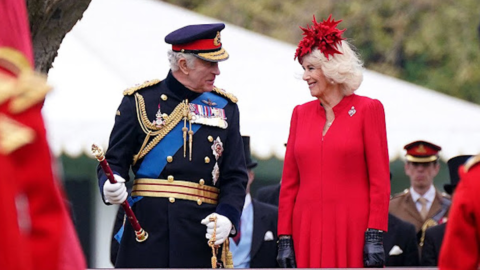The Queen Mother, Mary, seems to have delivered every year a bouquet of flowers to be placed on the sarcophagi that have kept the remains of her ancestors for centuries and centuries. AND the young prince Charles, Now crowned King, had come to visit, secretly, in the early 80s, this very ancient and suggestive Vangadizza Abbey, in Polesine, to pay homage to who they are the roots of the House of Windsor, his family.
The history of the English royal family between the Este and the Hanover
It is not a legend but a documented and in some ways sensational and very long story - little known in Italy - which testifies how these marble cases rest Alberto Azzo II d'Este (in turn progenitor of the Estensi of Ferrara) e Kunigonde of Altdorf Bavaria, progenitor with their son Guelph (Welf) IV of the House of Este of Germany, the Hanover, from which the current descends in a direct line British royal family.
The monastery dates back to the year one thousand
The sepulchral arks welcome, from the year one thousand, with their imposing and sacred presence, the visitors, in front of what used to be the church of a centuries-old Camaldolese monastery. Of this complex which had a long and prosperous agricultural and religious activity, very little remains, in particular the cloister with a trapezoidal plan, which dates back to the 1200s, which is accessed by a gothic arch in terracotta from the 1400s. While the church was destroyed by French in the 800s. Although deprived of the most impressive parts, what remains manages to communicate an extraordinary and solemn sense of peace, in a silence suspended between the low and shady arches, which magically envelops visitors.
The roots of the Windsors: it all began in 954
The history of the complex begins when it was built thanks to the donations of the Marquis Almerico of Mantua and his wife Franca, the last of which (and the only certain dating) was a disposition of 6 December 954, as shown by the precious documents among which some parchments dated 954, 961, 996 and 1219, etc., and which are part of the priceless treasure of ancient documents. This, suggested, in 2020, to the teachers and students of the Einaudi institute in Ferrara, the plot for a docu-film on the links between Estensi and Windsor, of which a copy has been sent to the Royal Family. Who has revealed that he thoroughly knows the invisible but indissoluble fil rouge that over the centuries has united this strip of Italian land with the most illustrious European families, Italian, Germanic, French and, finally, to the longest-lived, the one that has reigned over England for centuries. And it is a story which, in uniting and dividing the Europe of armies, courts, culture, wars but also peace and prosperity, has reached the present day as a shared cornerstone of the European Union, albeit partially and temporarily interrupted by Brexit.
From Alberto Azzo d'Este to the Windsors
Born July 10, 1009, Albert Azzo, count of Luni and marquis d'Este, died on 20 August 1097, while he was a guest in the Vangadizza Monastery, in Badia Polesine, near Rovigo. His son Guelph IV, of the Welfen dynasty, became the progenitor not only of the East branch of Germany, but also of the dukes of Bavaria, the dukes of Brunswick-Lüneburg, the dukes of Saxony-Lauenburg and the electors of Hanover, or of that branch that contributed to lconnect the noble Este family to the royal dynasty of England. Over the centuries, these illustrious families united and divided, creating relationships that built a dense network of potentates in Germany, France, Italy, Austria and, finally, in England. And with repeated crossings with the Marquises d'Este, which made the partnerships and kinships with the Italian noble lineage at the origin of the Windsors even stronger. Finally, in 1714, to crown its ascent, the House of Hanover, sometimes also referred to as the "House of Brunswick and Lüneburg, branch of Hanover", succeeded the House of Stuart, in the form of the "Monarchy of Great Britain and Ireland". To summarize the very complicated plot, the House of Hanover is therefore the most recent branch of the House of Welfen, which in turn was a branch of the House of Este. So far the complex European genealogy which starts in the heart of the Po Valley to reach the top of the world of the reigning house of England. And that very few in Italy know.





